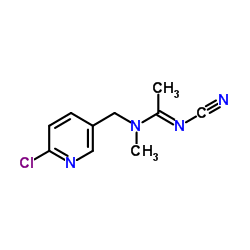Development and evaluation of alginate-chitosan nanocapsules for controlled release of acetamiprid.
Sandeep Kumar, Neetu Chauhan, Madhuban Gopal, Rajesh Kumar, Neeraj Dilbaghi
Index: Int. J. Biol. Macromol. 81 , 631-7, (2015)
Full Text: HTML
Abstract
Smart formulations based on nanomaterials have the capability to reduce the consumption of hazardous pesticides and their impact on human health and environment. Nanoformulations of agrochemicals have the potential to improve food productivity without compromising with the ecosystem. In the present work, controlled release nanocapsules containing acetamiprid were prepared by polyelectrolyte complexation of two natural macromolecules, i.e. alginate and chitosan. The size, morphology and chemical interaction studies of the prepared nanocapsules were investigated by Dynamic Light Scattering (DLS), Transmission Electron Microscopy (TEM), and Fourier Transform Infrared Spectroscopy (FTIR). The zetapotential studies revealed stability of the nanocapsules. TEM results show spherical morphology of the nanocapsules. The encapsulation efficiency was found to be 62% as quantified by Ultra High Pressure Liquid Chromatography (UHPLC). Nanocapsules were analysed for controlled release in vitro at three different pH. Maximum release was observed at pH 10 followed by pH 7 and 4, respectively. A non-Fickian release mechanism was found to be followed by the nanoformulation. A controlled release pattern was also found from nanoformulation as compared to commercial formulation in soil. Thus this formulation can reduce the frequency of application of pesticides by controlling the release and will subsequently reduce their side effects. Copyright © 2015 Elsevier B.V. All rights reserved.
Related Compounds
| Structure | Name/CAS No. | Molecular Formula | Articles |
|---|---|---|---|
 |
Acetamiprid
CAS:135410-20-7 |
C10H11ClN4 |
|
Capillary electrophoresis-mass spectrometry as a new approac...
2014-09-12 [J. Chromatogr. A. 1359 , 317-24, (2014)] |
|
Simultaneous determination of neonicotinoid insecticides in ...
2014-10-15 [J. Chromatogr. B. Analyt. Technol. Biomed. Life Sci. 969 , 85-94, (2014)] |
|
Development of a new cucumber reference material for pestici...
2015-04-01 [Anal. Bioanal. Chem 407(11) , 3083-91, (2015)] |
|
Mapping the elusive neonicotinoid binding site.
2007-05-22 [Proc. Natl. Acad. Sci. U. S. A. 104 , 9075-80, (2007)] |
|
Simultaneous determination of neonicotinoid insecticides in ...
2016-01-01 [Food Addit. Contam. Part A. Chem. Anal. Control. Expo. Risk Assess. 33 , 442-51, (2016)] |